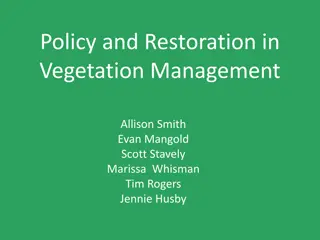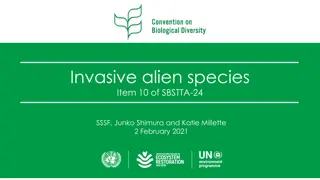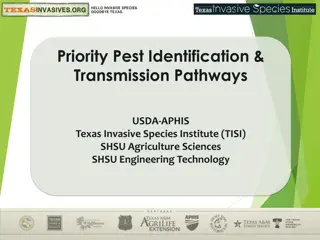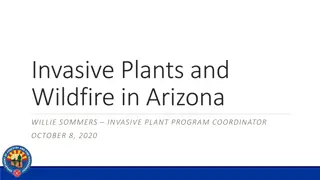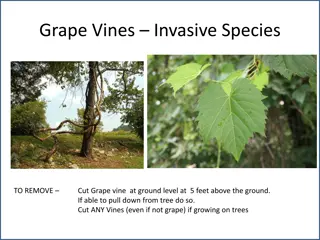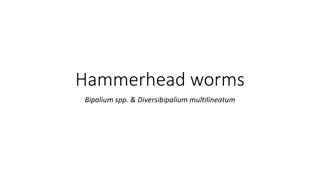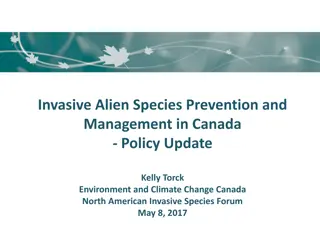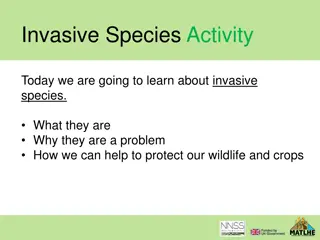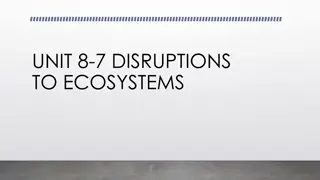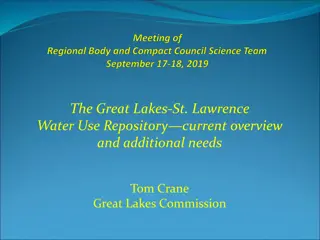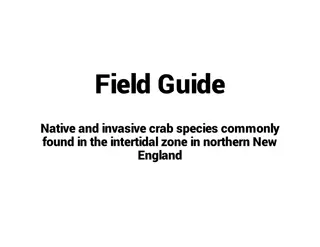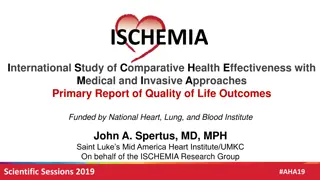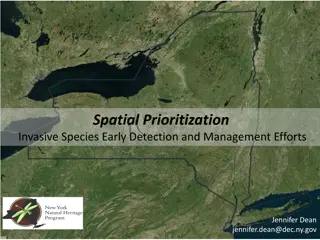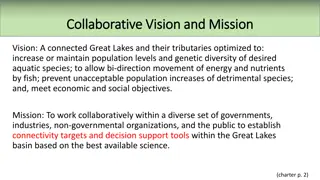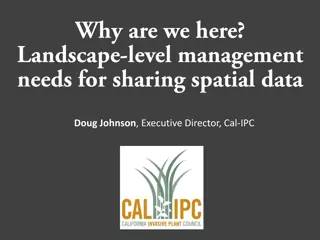Innovative Strategies for Managing Invasive Species in the Great Lakes
Balancing commercial, recreational, and other activities on the Great Lakes requires innovative actions to control existing invasive species and prevent future infestations. The work group focuses on defining AIS, evaluating vectors/pathways, current prevention strategies, accelerating control methods, and making recommendations for better coordination and resource investment in AIS management.
Download Presentation

Please find below an Image/Link to download the presentation.
The content on the website is provided AS IS for your information and personal use only. It may not be sold, licensed, or shared on other websites without obtaining consent from the author. Download presentation by click this link. If you encounter any issues during the download, it is possible that the publisher has removed the file from their server.
E N D
Presentation Transcript
Charge Question to GLAB: Balancing the need for continued commercial, recreational, and other activities on the Great Lakes, what innovative actions could reasonably reasonably be taken to accelerate the control of existing invasive species, and what methods or strategies can be deployed to prevent the establishment of future infestations? innovative Work Group Members: Lisa Frede, chair Kyle Dreyfuss-Wells Kay Nelson Al Steinman Jeff Stollenwerk
Define AIS (non-native plants, animals, and other organisms that have evolved to live primarily in water rather than on land) Assess AIS via vectors/pathways: - Vessel discharge (VIDA) - Canals and waterways (GLMRIS) - Recreational activities (separate state regs) - Aquaculture/Organisms in trade - Other pathways (https://glmris.anl.gov/other-pathways/) (cultural, religious, indigenous practices)
Examples of methods or strategies currently being deployed to prevent the establishment of future infestations given that prevention is a primary management focus. - Progress being made at state, provincial, and federal levels (https://www.glerl.noaa.gov/glansis/). - Recreational boating but different rates of adoption of best practice.
Innovative actions that could reasonably be taken to accelerate the control of existing invasive species. - Monetary reallocation of AIS toward vectors/pathways instead of single-species focus (a small number of high-profile species). - Species-level developments: - Dreissenids: open water treatment at Good Harbor reef was a useful proof of concept - challenge is how to scale up for these critical habitats and need to answer whether suppression is sustained and results in improved spawning habitat - Phragmites: microbial control and gene silencing looking promising (K. Kowalski) - Grass carp response program: program has clear objectives based on science
Recommendations Recommendations #1: Better coordination, information exchange, and database sharing at the federal, state, and local levels: essential given that it takes only one weak link in the prevention network for AIS to invade and potentially spread. (for example: work with the IJC to coordinate and develop an early detection and response system)
Recommendations Recommendations #2: Greater resource investment in: a) coordinated information management on AIS (and ancillary monitoring efforts) among the relevant jurisdictions in the Great Lakes Basin b) next generation sequencing and genomics environmental DNA analysis screening for AIS c) biocide development and testing d) fund VIDA (Vessel Incidental Discharge Act)
Recommendations Recommendations #3: Financial allocations involving AIS have a two-fold strategy: a) Continue efforts at the vector and pathway levels, to maintain a coordinated prevention approach. b) Focus on the development of management tools for a broader suite of high impact, established AIS that pose the greatest impediment to restoration of key sites and habitats across the Great Lakes, such as coastal wetlands and coastal spawning reefs.
Recommendations Recommendations #4: Initiate a coordinated research and stakeholder engagement program, involving aquatic and molecular ecologists, ethicists, social scientists, biotech specialists, and venture capitalists to explore the feasibility, desirability, and legality of gene drive technology as a control mechanism for AIS. #5: Develop a regional grant program, using both private and public funds that addresses all AIS and has funding of sufficient size to attract a large pool of applicants. #6: Start an annual or biennial AIS Prize, with a monetary award, which is open to both the private and public sectors, to help develop new and creative ideas to control or prevent AIS.
Discussion Prompts Discussion Prompts What areas we are missing? Stakeholders Other research ideas Existing preventative measures/controls Prioritize recommendations?




